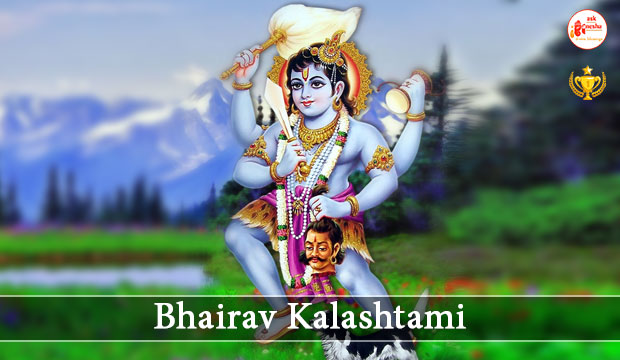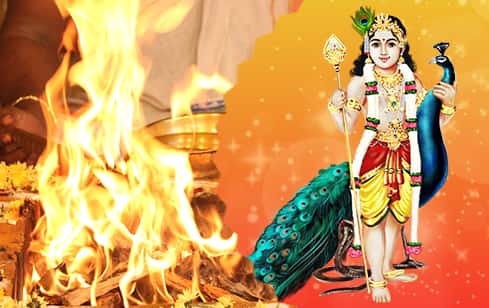December (Margsheersha-Paush)
Bhairavashtami (Kalashtami)

Bhairava Ashtami, also known as Bhairavashtami, Bhairava Jayanti, Kala-Bhairava Ashtami and Kala-Bhairava Jayanti is a Hindu holy day commemorating the birthday of Bhairava (lit. “terrible”), a fearsome and wrathful manifestation of the god Shiva. It falls on the eighth lunar day (ashtami) in the fortnight of the waning moon (Krishna paksha) in the Hindu month of Kartik (per the South Indian Amavasyant calendar, every month ends with a new moon) or Margashirsha (per the North Indian Purnimant calendar, every month ends with a full moon). By both schemes, Bhairava Ashtami falls on the same day in November–December. The name Kalashtami is sometimes used to refer to this day, but might also refer to any ashtami in Krishna paksha, all of which are sacred days of Bhairava, who is also called also Dandapani (as holds a rod or Danda to punish sinners) and he rides a dog he is also known as Swaswa meaning “whose horse is a dog”.
Bhairava is a manifestation of Shiva’s wrath. According to the legend narrated on the occasion, the Trimurti gods, Brahma, Vishnu and Shiva were talking in a serious mood as to who was superior of them all. In the heated debate, Shiva felt slighted by remarks made by Brahma and instructed his ganor Bhairava to cut of one of Brahma’s five heads. Bhairava followed Shiva’s orders and one head of Brahma was cut off and thus he became four headed. Instilled with fear, all others prayed to Shiva and Bhairava.
An all-night vigil is observed on Bhairava Ashtami with prayers, worship and tales of Bhairava, Shiva and Parvati being told. In the midnight, an arati of Bhairava should be performed with conches, bells and drums A devotee is said to be freed of sin and the fear of death by observing Bhairava Ashtami.
Bhairava Ashtami is observed in Bhairav Prasad Temple in Vaishno Devi hills in Kashmir. On this day, an image of Kala-Bhairava is made in gold or silver and immersed in a brass metal pot filled with water and worshipped with all scriptural prayers, as is done to Shiva. Then, the priests who do the puja are offered gifts.
In Varanasi, an eight-day pilgrimage of the eight temples dedicated to Ashta Bhairava, eight subsidiary aspects of Bhairava, is undertaken on the first eight days of the fortnight, culminating with Bhairava Ashtami.
Skand Shashthi (Guhya)

The occurrence of Shashti during the Malayalam month of Thulam (October-November) is considered of great importance and celebrated as Skanda Shashti. Devotees organise Bhajan and Kirtan programs on a grand scale. Several devotees of Muruga observe partial or full fast on each Sashti day and throughout the Skanda Sashti period. Sashti is the day that Lord Subramanya defeated the demon Soorapadman.
Whoever fasts and prays to Lord Muruga for the six days of Skanda Sashti is believed to receive Muruga’s blessings. Those who are unable to fast all day are permitted to eat once per day during this period.
The Story of Skanda Shasti is the story of the birth of Skanda or Kumara and the fulfillment of the purpose of His divine incarnation. “Tormented by the asura (demon/anti God) Tarakasura, the devas with Indra at their head went to the world of the self born the creator” (Kumara Sambhava) The creator said ” only the spark of Shiva can produce the hero who will defeat the powers of the evil” Unfortunately, Shiva The king of yogis was lost in a deep state of meditation and samadhi. None of the Devas dared to disturb him… least of all convince him to create a progeny.
According to Swami Sivananda “the Lord spent His childhood in Tiruchendur and took Mahasamadhi at Kathirgamam. If anyone goes to Kathirgamam (Sri Lanka) with faith, devotion and piety, and stays in the temple for two or three days, the Lord Himself grants His vision to the devotee.”
